File ED 84/339 holds records of the National Federation of Women’s Institutes (NFWI) Exhibitions of 1952 and 1960. We take a little look inside…
The first national Women’s Institute (WI) exhibitions were held in London at the end of World War I. Later, the Yorkshire Gazette (9 October 1959) commented that ‘In those days a great deal of artistic feeling and ability was beginning to be awakened, and the exhibitions were an example to the many people who had no idea of the skills of the country-woman’. Following a pause during World War II, another exhibition was planned for 1952 – and the Institute was keen to make a splash with a new and improved Exhibition of Handicrafts, and wanted the V&A to be involved.
This file starts with 1949 correspondence between Marjorie Freeman, Organising Secretary of the WI, and C.H. Gibbs-Smith, Keeper of Museum Extension Services. Gallery 45 was offered free of charge, and the date for the exhibition set for March 1952. Director Leigh Ashton seemed enthusiastic about it; however, let the following comment slip in a piece of internal correspondence to Gibbs-Smith:
‘While this is obviously a rather boring exhibition, I do not feel we can very well refuse … Lady Listowel will be the President’
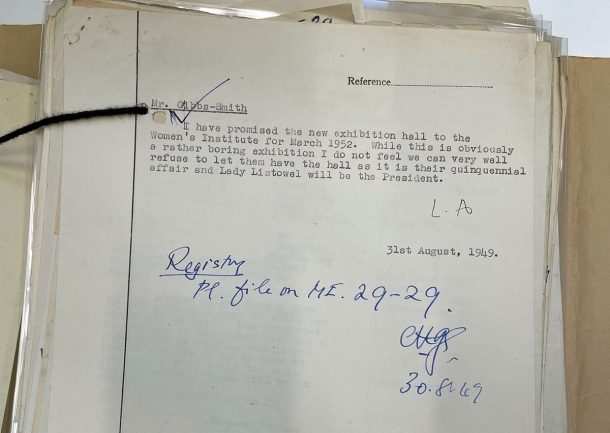
There were clearly some personal politics at work, as Lady Listowel, also known as Countess Freda Hare, was a donor to the V&A, as well as President of the NFWI and a friend of Leigh Ashton’s. She also organised a WI exhibition at the Scala Theatre in 1957, to which the V&A loaned various items from the Gabrielle Enthoven collection (which formed the basis of the Theatre collections).
Marjorie Freeman was extremely diligent in organising the exhibition, and took extraordinary care over every detail – she constantly apologised for being a nuisance (perhaps intuiting a hint of impatience in Gibbs-Smith’s responses). She explained to him, more than a year prior to the exhibition opening:
‘I’m sure you must think we are peculiar in already being so busy with plans, but our members have to be given a very long time in which to accomplish work in between their household duties’.
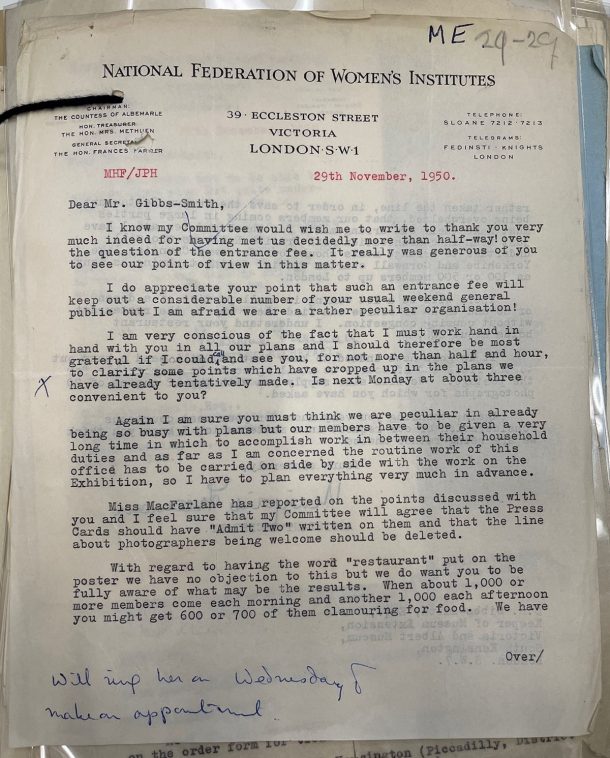
Further into the file, there is a press release containing information about some of the members, whose work had been through a rigorous selection process and whittled down to a few hundred exhibits from thousands of entries. There is a particularly lovely description of a quilt made by Miss Averil Colby (see Nominal File MA/1/C2027), which ‘cost nothing at all’ to make from: ‘a grandmother’s trousseau, the jacket of a Commander in the Royal Navy, loose covers of 50 years ago in the Royal Yacht “Victoria & Albert”, a friend’s tennis dress and the curtains of a four-poster bed’. The actual cost turns out to be a mere 20 (twenty!) years of Colby’s leisure time. The author of the press release explained that some exhibits had taken so long to make because ‘the WI member has so many other things to attend to’.
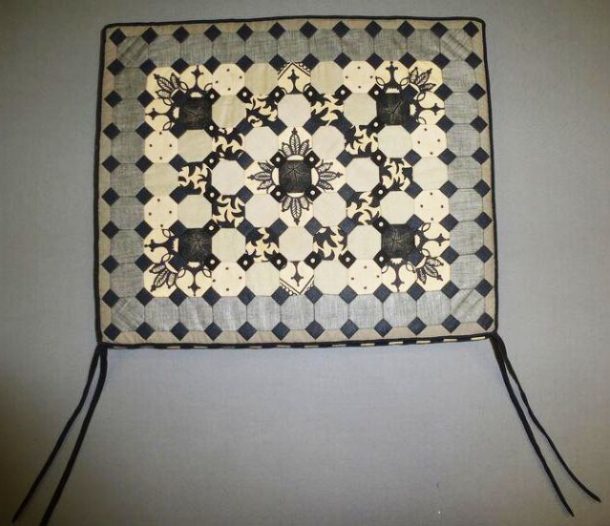
The press release also contains the following mission statement:
It is hoped that enjoyment of three kinds will be in store for the visitor to the Exhibition – enjoyment of the colours of silks, linens, felts, leather, wool; enjoyment in the finish of the exhibits whether woven on the loom or traced in fine embroidery, and, finally, satisfaction that these exhibits once shown will become part of someone’s life: the clothes will be worn, the toys played with, the quilts slept under.
The exhibition of 1952 was a great success, with queues throughout the two weeks it was open. General Secretary Frances Farrer commented ‘this was due to the unexpected interest taken by Londoners, who almost outnumbered our own members’. Freeman estimated the number of attendees was close to 45,000.
The V&A agreed, when approached by the NFWI again in 1957, to lend them gallery 45 for three weeks this time, in Spring 1960, for another Handicrafts Exhibition titled The Country Year. ‘They get enormous attendances, so it is quite good all round’ said Gibbs-Smith, in a piece of internal mail dated 6 February 1957. However, this time, museum policy dictated that the NFWI was required to hand over 10% of any profit made, to which the NFWI heartily agreed.
The Country Year garnered some good press attention, and attracted Royal visitors:
‘The Queen Mother may visit on the afternoon of the 15th and the Duchess of Gloucester on the 17th‘ wrote Museum Superintendent P. Winter in a February 1960 memo.
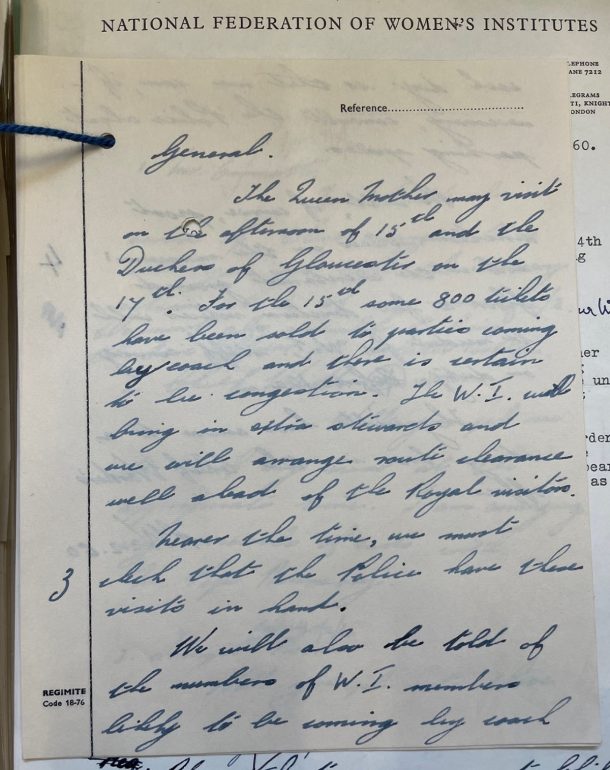
The V&A’s Council and Keepers were all invited to the private view. All Keepers were men at the time, but two Council members out of eighteen were women: Dr Joan Evans, F.S.A. and Miss C.V. Wedgwood, C.B.E. We have a Nominal File for Evans (MA/1/E878), which contains papers relating to the many items she donated to the museum over around five decades of work as an eminent art historian (read more here). Wedgwood was also a distinguished historian and biographer of her famous relative Josiah.
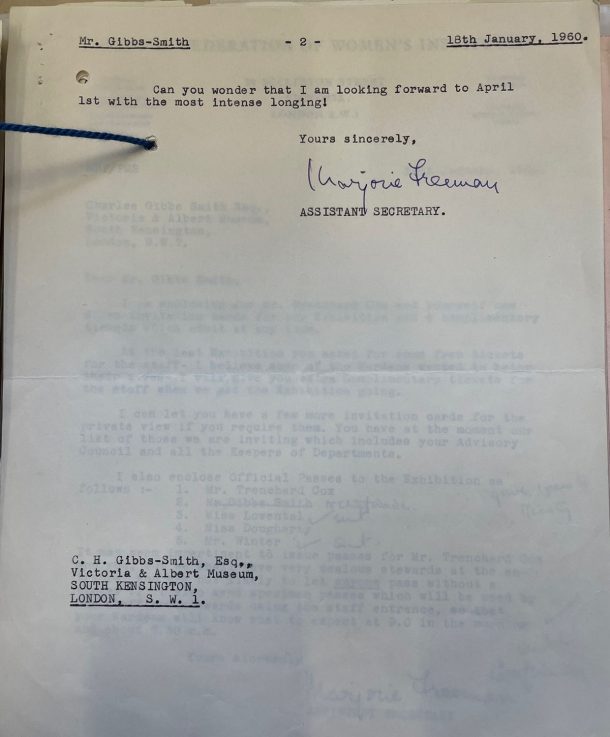
The 1960 press release highlighted the modern embroidery section of the exhibition as perhaps the most exciting, and that the most progress had been made in this area since 1952. It also mentioned that Colby (of the quilt which ‘cost nothing at all’) had since written a book on patchwork (titled Patchwork – which can be found at the National Art Library along with her other works on quilting and embroidery) and many other members had also written books that were sold at the 1960 exhibition.
The 1960 exhibition was another hit, with 42,346 attendees, and made a profit of around £500. Freeman was surprised at the slight downturn in numbers. Gibbs-Smith was also surprised and commented that ‘it may simply be competitive attractions, or a slight falling-off in the whole subject in general.’
In a discussion with the Superintendent about the share of profits going to the museum, Freeman signed off the letter, ‘I hope you will not have such a strenuous time as you had last year with those thousands of women milling round the whole time!’ I can’t find evidence of Winter making such an accusation in writing, but there you go.
The file ends with a small collection of press cuttings, including the image below, a page from The Lady magazine, 29 September 1960, which shows how you can make your own corn dollies! There was quite a lot of press about the corn dollies, as a lost craft revived by the WI. A cutting from the Surrey Advertiser is headed: ‘The traditional crafts whose decline is so deplored by critics of this “machine-made” age have found a stalwart trustee in the Women’s Institutes’.
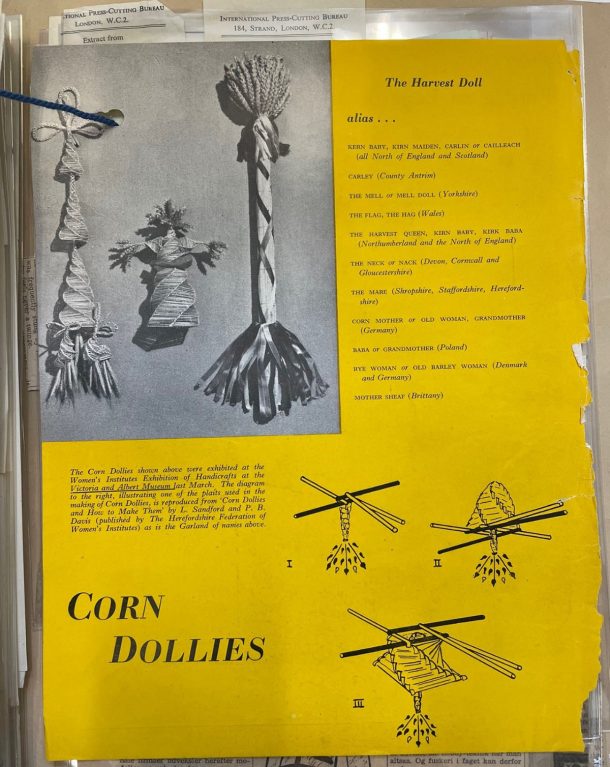
Learn more about the V&A’s past exhibitions and the women behind them by coming to the National Art Library and getting lost in the V&A Archives! You can explore the archive I was looking at here. Email archive@vam.ac.uk


